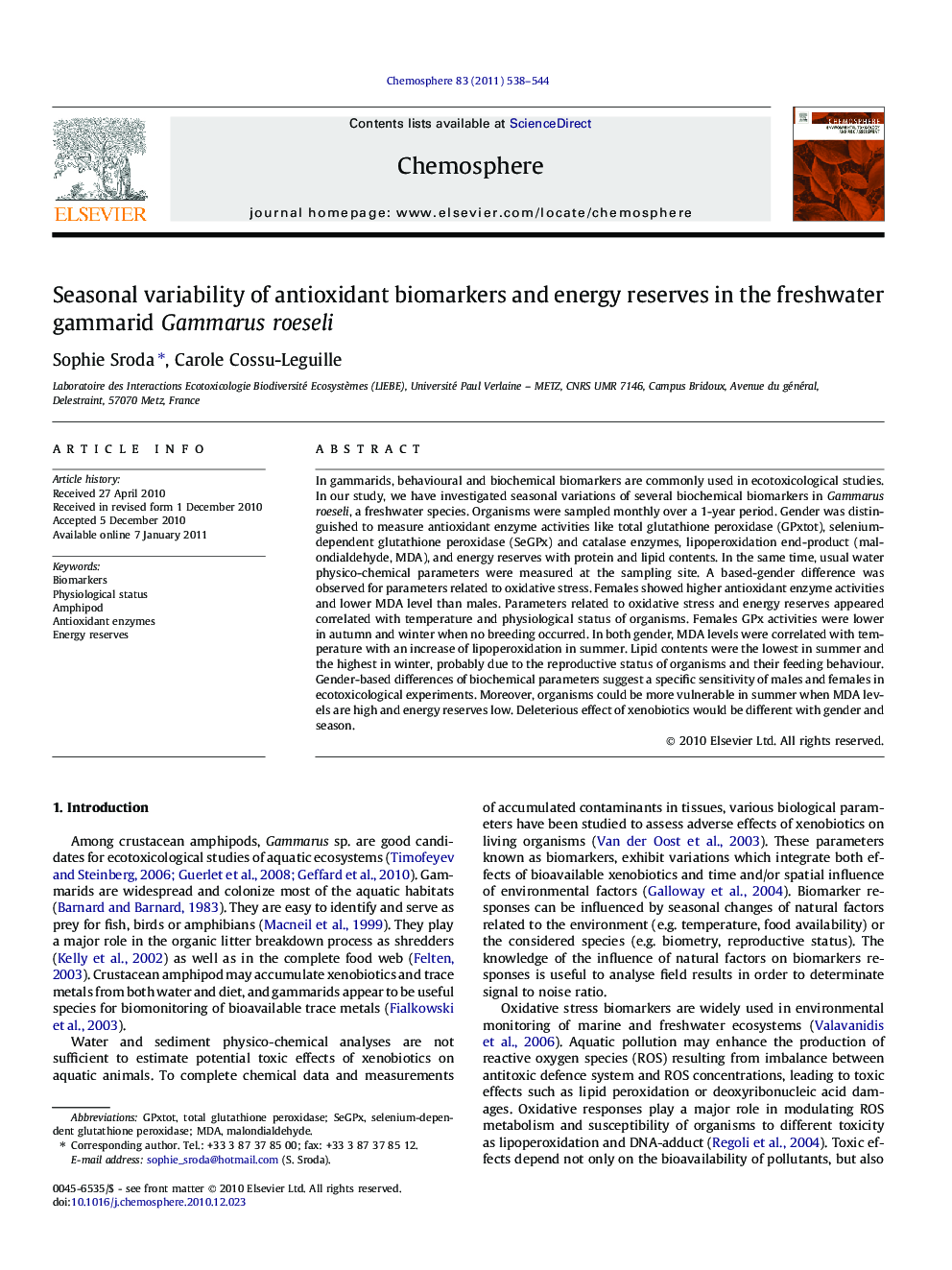| Article ID | Journal | Published Year | Pages | File Type |
|---|---|---|---|---|
| 4411077 | Chemosphere | 2011 | 7 Pages |
In gammarids, behavioural and biochemical biomarkers are commonly used in ecotoxicological studies. In our study, we have investigated seasonal variations of several biochemical biomarkers in Gammarus roeseli, a freshwater species. Organisms were sampled monthly over a 1-year period. Gender was distinguished to measure antioxidant enzyme activities like total glutathione peroxidase (GPxtot), selenium-dependent glutathione peroxidase (SeGPx) and catalase enzymes, lipoperoxidation end-product (malondialdehyde, MDA), and energy reserves with protein and lipid contents. In the same time, usual water physico-chemical parameters were measured at the sampling site. A based-gender difference was observed for parameters related to oxidative stress. Females showed higher antioxidant enzyme activities and lower MDA level than males. Parameters related to oxidative stress and energy reserves appeared correlated with temperature and physiological status of organisms. Females GPx activities were lower in autumn and winter when no breeding occurred. In both gender, MDA levels were correlated with temperature with an increase of lipoperoxidation in summer. Lipid contents were the lowest in summer and the highest in winter, probably due to the reproductive status of organisms and their feeding behaviour. Gender-based differences of biochemical parameters suggest a specific sensitivity of males and females in ecotoxicological experiments. Moreover, organisms could be more vulnerable in summer when MDA levels are high and energy reserves low. Deleterious effect of xenobiotics would be different with gender and season.
Research highlights► The aim is to provide data on basal level and seasonal variability of biomarkers measured in G. roeseli. ► Few papers investigated gender specific responses of these parameters in seasonal study. ► Our results higthlight a gender-based difference for measured parameters. ► It must be assumed sensitivity and biomarker responses could be different with gender and season.
